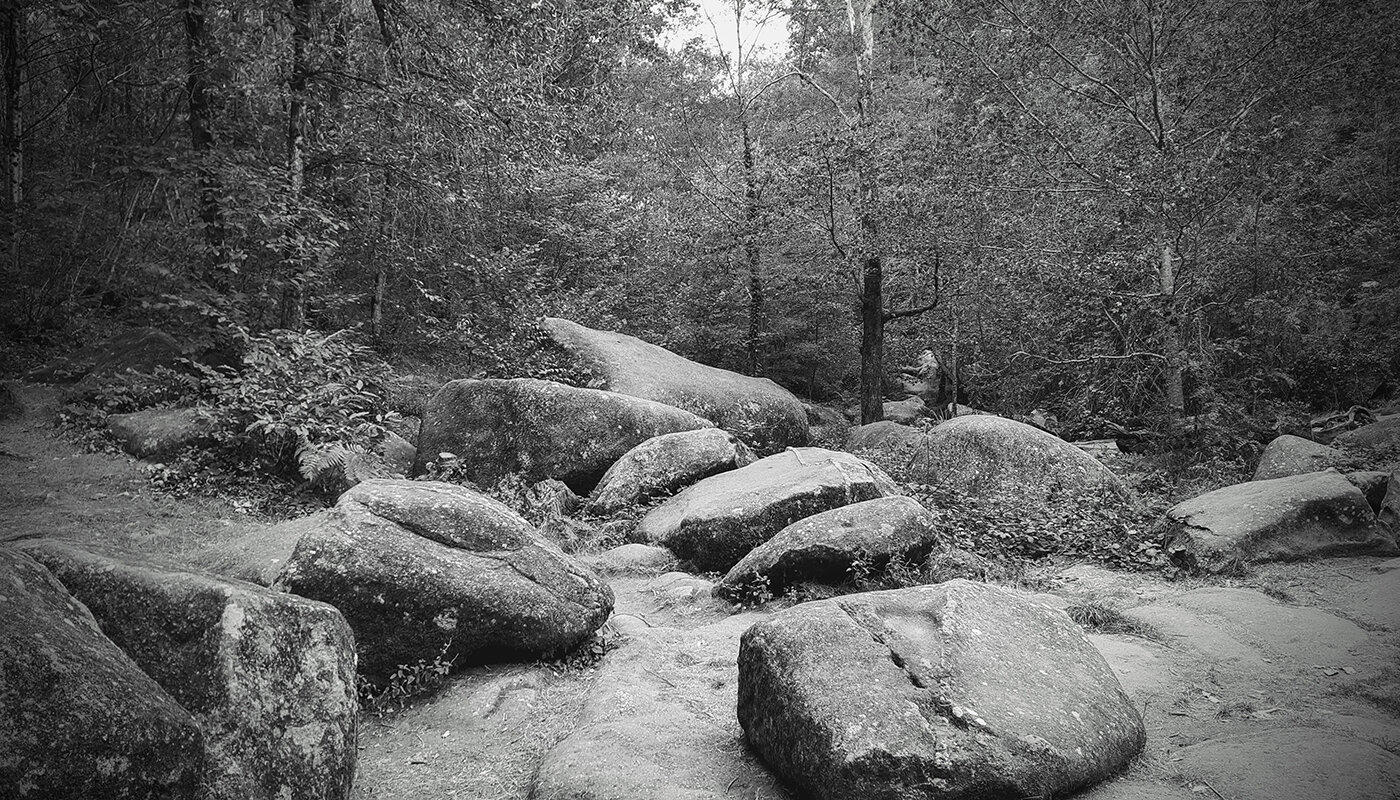Having enjoyed many a walk around Grand Etang de Saint-Estèphe, we have often passed the sign for 'Boucle de Grand Roc' walking route and decided this morning to follow the loop instead of our usual lake circuit to discover the Roc Branlant.
The Roc Branlant (Wobbly Rock) is a listed site along with the Chapelet du Diable (Devil's Rosary), the rock filled stream linking Etang de Saint-Estèphe with the Etang des Cygnes (Pond of Swans). The 'granite chaos' stretches 250m from the Roc Branlant. As with all geological marvels, there's a tale to be told – in this case it's the story of a monk from the priory of Badeix who was walking at the Etang de Saint Estèphe and met the Devil. Taking fright, the monk fled and threw his rosary in the face of the Devil who was chasing him. The rosary broke and all the beads scattered, forming the Devil's Rosary.
We love a good boulder-filled valley, and this one was no exception. It was a totally unexpected and spectacular sight as we entered the valley from above via a rather precarious rocky, stepped trail (the hard way). The Roc Branlant was the last rock we came to – to find a Spanish tourists trying to impress his wife and daughter by pushing the rock over. Why? The name, 'Wobbly Rock' gives you a clue. The 320 million year old, 50 tonne rock is balanced on top of another rock and with a relatively small push you can show your super-human strength and literally move the rock.
Throughout history the stone was a setting for religious rites due to the supernatural forces at work. In the Middle Ages it was likely used to judge guilt (just think 'witch trials') – if you could move the rock you were guilty …. or just unfortunate to have pushed it in the wrong place! And it's quite easy to imagine a sacrifice or two taking place, an Indiana Jones style villain, or a James Bond Live & Let Die moment! And going back to the monk … the rock is said to cover the gates of hell where the Devil would try to attract the local monks.
Today, rituals are a bit less bloody, consisting of wedging a coin under the monolith, so that it crushes the coin. It is said to bring good luck – unless of course you crush your fingers trying to pull the coin out! We'll give it a go next time we're at the lake.
Now that we know where the Roc and Chapelet are sited we aim to take the ten minute walk to it, rather than the one-hour loop! We resorted to a mix of Google Maps and CircWiki to find our way but not before we'd had a 1km detour on an entirely unrelated path!
To save guests unwittingly following the same unnecessarily long and uninteresting route that we did, we’ve used the great www.maps.ie tool to plot a pleasant walk around the lake with a diversion down to the Devil's Rosary and Roc Branlant which can be download as a GPX or KML file. Click the map to check it out.
And watch out on our Facebook page for the coin crushing experiment later in the year!





